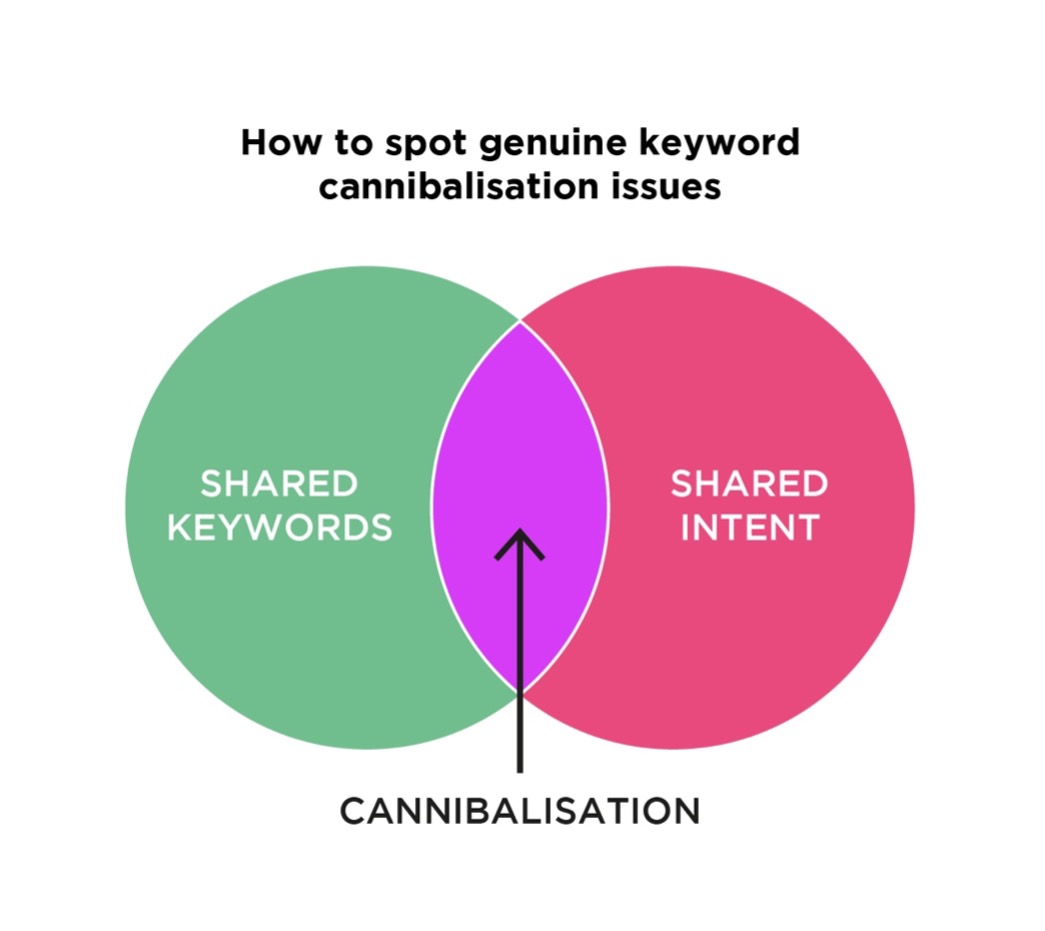Do you like keywords a little bit too much? Like, with fava beans and a nice Chianti? One of the most dramatic (and misunderstood) terms in the SEO world is keyword cannibalisation.
Luckily, we’re here to dispense with the drama, and clear the confusion. Once you know what you’re looking for, keyword cannibalisation is fairly easy to spot. And if your content has been created with a strong strategy in mind, then it’s pretty straightforward to fix it, too.
What is Keyword Cannibalisation?
When a search engine ‘crawls’ your webpages, it locates keywords and makes assumptions about what you’re writing about. Then if someone Googles that topic, the search engine knows that your page provides an answer to that search.
However, if two pages from the same website share a lot of the same keywords, and seem to be providing the same (or very similar information), the search engine gets confused. When someone Googles the topic, the search engine isn’t sure which page to give them. So one or both pages lose out, and the best search results ranking position available for that content is lost. They’ve ‘cannibalised’ each other.
Oh no! But there’s only so many ways to say what I do – like if my keyword is ‘content marketing agency Leeds’, there’s only so many ways to say that I offer content marketing services from an agency in Leeds – isn’t there?
Simmer down. It’s easier than you think (especially if you’re a content marketer). The problem only arises when both pages are too similar in their exact keywords and the purpose of the page.

So, an article about ‘how to increase your website traffic with content marketing’ and ‘how to bring people to your website with content marketing’ would present a potential cannibalisation problem.
However, if one of the articles was ‘how to increase revenue with content marketing’, then you would expect those articles to be significantly different in the ways (and keywords) used to discuss content marketing.
Got it? Good. Let’s learn how to spot this problem, and look at some of the tell-tale signs.
How to Spot Keyword Cannibalisation
SERP ranking fluctuation. If you’ve confused the search engine, it’s likely you’ll see some odd fluctuations in the search engine results ranking of the affected pages – inexplicably dropping or rising back and forth over time (check for other, more obvious reasons too, like a competitor’s content outperforming yours, or technical issues with your website).
Use Google Search Console to spot keyword overlaps. Under the ‘Performance’ tab in GSC, hit ‘Pages’, select your suspected cannibal page, then hit ‘Queries’ to see what keyword that page is ranking for. This is a quick way to identify any exact keyword matches between pages.
Use site: search + “target phrase”. This should give you a search engine results page based only on instances of the keyword on your site. For larger/older sites, this can be a useful way to see if there’s a blog somewhere you’ve forgotten about.
Map your content and keywords. This involves a fair bit of work at the outset, but it’s well worth it – a detailed SEO map is a great tool for your content planning, too. It’s one of the many tools in the Trio SEO toolkit.
Using a spreadsheet to track the primary and secondary keywords from each page and piece of content on your website will allow you to instantly identify any potential cannibalisation issues, before they even arise.
How to Fix Keyword Cannibalisation
First off – before you do anything messy to your website – is the cannibalisation you’ve identified actually a problem?
Check the definition again – what’s the intent of each page? Because you can’t rank every page for everything. And if one of the competing pages has disappeared for one particular keyword, that doesn’t mean that it’s not doing a great job with a whole bunch of other keywords. It might be best to leave it alone – or perform a very minor surgery, just to neaten up a couple of offending sections.
Adjust and edit cannibalising pages with better keyword choices and improved intent. If there’s a genuine SEO benefit to messing around with these pages, then you should look at editing them, with a view to (carefully) separating out the intended purpose of each page. Tweak the keywords, and add additional sections to express the different ideas more clearly.
Try not to mess with the URLs though – if it’s that bad, it might be worth combining both pieces into one much stronger piece, and using 301 redirects to reroute traffic from both the old pages to the new page.
Use content clusters when planning content. This isn’t just a great SEO strategy – it’s a great way to really prove your authority on a given subject. Your business or website should have a few topics that you really want to own – a content cluster is how it’s done.
Create a central piece (your pillar content) that explains the topic in a good amount of detail. Then pick some related or key areas of the topic that could be useful to explain in more detail – ‘how to get started with’, or ‘the future of’. These are your cluster content pieces. Each piece will have its own subtly different set of keywords, and the internal linking between the pieces will provide a strong signal to Google that your site is a source of knowledge and authority on this topic.
Map your content and your keywords. So important we said it AGAIN – SEO is all about the measuring and the tweaks. Map out your content, and the only cannibalisation you’re likely to see will be on a cinema screen (if that’s your thing).
Is your site trying to eat itself? Bring it to Trio, the finest content marketing agency in Leeds, and we’ll teach it some manners.


